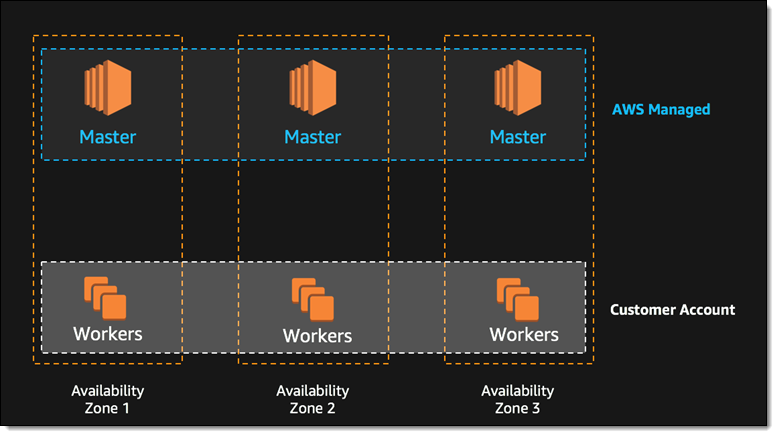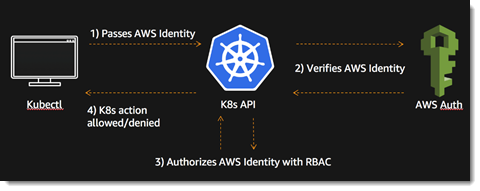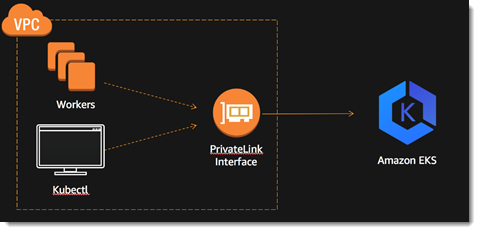AWS News Blog
Amazon Elastic Container Service for Kubernetes
My colleague Deepak Singh has a lot to say about containers!
— Jeff;
We have a lot of AWS customers who run Kubernetes on AWS. In fact, according to the Cloud Native Computing Foundation, 63% of Kubernetes workloads run on AWS. While AWS is a popular place to run Kubernetes, there’s still a lot of manual configuration that customers need to manage their Kubernetes clusters. You have to install and operate the Kubernetes master and configure a cluster of Kubernetes workers. In order to achieve high availability in you Kubernetes clusters, you have to run at least three Kubernetes masters across different AZs. Each master needs to be configured to talk to each, reliably share information, load balance, and failover to the other masters if one experiences a failure. Then once you have it all set up and running you still have to deal with upgrades and patches of the masters and workers software. This all requires a good deal of operational expertise and effort, and customers asked us to make this easier.
Introducing Amazon EKS
Amazon Elastic Container Service for Kubernetes (Amazon EKS) is a fully managed service that makes it easy for you to use Kubernetes on AWS without having to be an expert in managing Kubernetes clusters. There are few things that we think developers will really like about this service. First, Amazon EKS runs the upstream version of the open-source Kubernetes software, so you can use all the existing plugins and tooling from the Kubernetes community. Applications running on Amazon EKS are fully compatible with applications running on any standard Kubernetes environment, whether running in on-premises datacenters or public clouds. This means that you can easily migrate your Kubernetes application to Amazon EKS with zero code changes. Second, Amazon EKS automatically runs K8s with three masters across three AZs to protect against a single point of failure. This multi-AZ architecture delivers resiliency against the loss of an AWS Availability Zone.

Third, Amazon EKS also automatically detects and replaces unhealthy masters, and it provides automated version upgrades and patching for the masters. Last, Amazon EKS is integrated with a number of key AWS features such as Elastic Load Balancing for load distribution, IAM for authentication, Amazon VPC for isolation, AWS PrivateLink for private network access, and AWS CloudTrail for logging.
How it Works
Now, let’s see how some of this works. Amazon EKS integrates IAM authentication with Kubernetes RBAC (the native role based access control system for Kubernetes) through a collaboration with Heptio.

You can assign RBAC roles directly to each IAM entity allowing you to granularly control access permissions to your Kubernetes masters. This allows you to easily manage your Kubernetes clusters using standard Kubernetes tools, such as kubectl.
You can also use PrivateLink if you want to access your Kubernetes masters directly from your own Amazon VPC. With PrivateLink, your Kubernetes masters and the Amazon EKS service endpoint appear as an elastic network interface with private IP addresses in your Amazon VPC.

This allows you to access the Kubernetes masters and the Amazon EKS service directly from within your own Amazon VPC, without using public IP addresses or requiring the traffic to traverse the internet.
Finally, we also built an open source CNI plugin that anyone can use with their Kubernetes clusters on AWS. This allows you to natively use Amazon VPC networking with your Kubernetes pods.

With Amazon EKS, launching a Kubernetes cluster is as easy as a few clicks in the AWS Management Console. Amazon EKS handles the rest, the upgrades, patching, and high availability. Amazon EKS is available in Preview. We look forward to hearing your feedback.
— Deepak Singh, General Manager of AWS Container Services